DFINITY Review – An Unbounded Virtual Blockchain Computer
| Coin Name | DFINITY |
| Coin Ticker | DFN |
| Token Type | OWN Wallet |
| Total Tokens | TBA |
| Website URL | https://DFINITY.org/ |
| White Paper URL | https://DFINITY.org/pdf-viewer/pdfs/viewer?file=../library/DFINITY-consensus.pdf |
DFINITY is a decentralized network that generates a reliable “virtual blockchain computer” running on top of a P2P network. From this network you can install software and operate smart contracts. DFINITY’s goal is to provide faster computations, predictable performance and scalable and unbounded capacity for storage. Its aim is to be a sister network to Ethereum, broadening the Ethereum Virtual Machine (EVM) ecosystem to strengthen it from competition from enterprise markets.
Article Summary
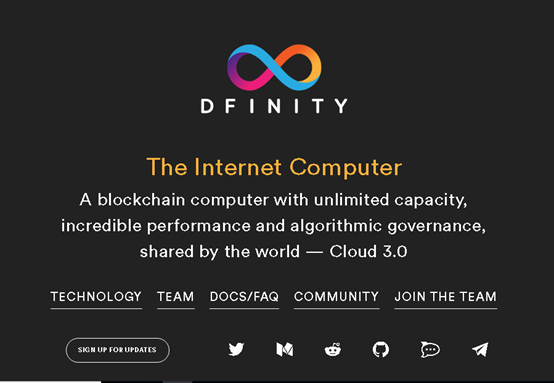
The Idea and the Team Behind DFINITY
DFNITY is a company with origins long before the current crypto craze. The very beginning of the project originated in 2015 with the idea of how randomness from cryptography could be used to create a blockchain computer with unlimited capacity and incredible performance. As time went on, support for the project grew and a not-for-profit Swiss foundation, DFINITY Stiftung, was created in 2016. Seed funding followed shortly thereafter, raising $4.2 million which were received mostly in bitcoin and ether.
The President and Chief Scientist of DFINITY is Dominic William. Williams has a vast amount of experience in blockchain and cryptocurrencies, and is also a serial entrepreneur. One of his latest projects was an MMO/social network directed at 8-12 yrs boys that grew to almost 3 million user accounts, making it at one time the fastest growing kids game in Europe. DFINITY’s head of engineering is Timo Hanke. Before getting involved in crypto, Hanke was a professor of mathematics and cryptography at Aachen University in Germany. He also was the founder and creator of AsicBoost, a method used to increase the efficiency of bitcoin mining by 20%. This method has since become a standard in large-scale mining operations.
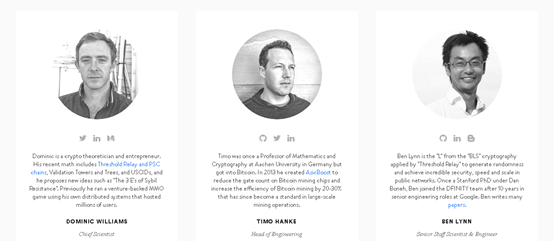
The company has research centers based in Palo Alto, California.
The DFINITY Technology
DFINITY aims to develop a blockchain computer that is the intelligent decentralized cloud. In doing so, it has 4 main objectives:
-
- Reimagine enterprise IP and slash costs up to 90% by reducing human capital needs. This includes an enterprise IP that is:
o Autonomous – i.e. systems without intermediaries.
o Verifiable – You should know what code to execute.
o Tamper-proof – With no servers to meddle with.
o Interoperable – Server boundaries should be nonexistent.
o Shareable – With open code and governance.
o Unstoppable – Servers don’t exist, so they also don’t fail.
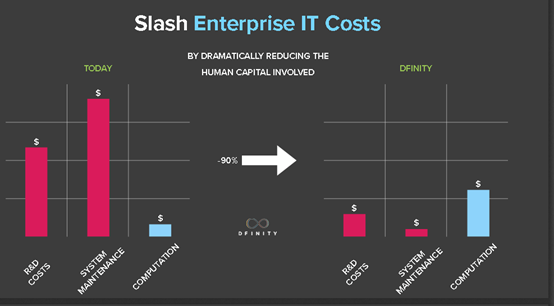
-
- Power real decentralized finance that uses “cryptofiat” technology (e.g. PHI).
o In other words, replace commercial banking with autonomous smart contracts that use algorithms and open networks to give out loans more reliably, creating stable fiat-like cryptocurrency as a side-effect. String Lab’s PHI project offers this decentralized version.
-
- Power open-source businesses that compete with monopolistic intermediaries (e.g. Ebay)
o Create open-source businesses using autonomous self-updating software
-
- Distribute data and computation outside of mega data centers (e.g. AWS)
o String Labs is currently working on consumer DFINITY mining and neuron device concepts
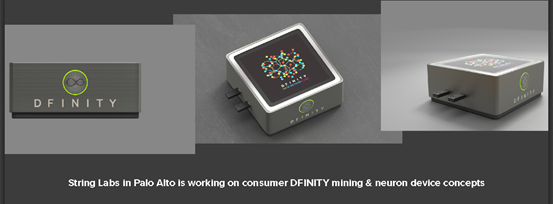
DFINITY researchers imagine a supercomputer in cyberspace that scale in capacity. In other words, it is a super massive mainframe shared by the world, enabling systems to operate together without boundaries. To reach this goal, DFINITY has pioneered new techniques involving Virtual Random Functions (VRFs) that enable faster and more secure computations. It also supplies infinite computer capacity through unpredictable randomness from these VRFs.
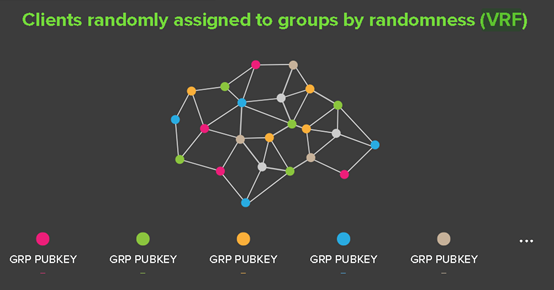
The long-term goal of DFINITY is to provide a new open cloud computing platform running on a decentralized network that is an alternative to the current centralized systems developed by technology giants such as Amazon, Google and Microsoft (which DFINITY refers to as monopolistic). Businesses relocating their enterprise IT to DFINITY will receive massive benefits in terms of cost-cutting expenditures, which will then encourage Open Decentralized Business Infrastructures (ODBIs). ODBIs should be thought of as shared business infrastructure components that can be introduced into business system over and over again, much like reusable software parts.

One of the best real-life examples of how ODBIs can best be utilized is through a supply-chain blockchain system that would track the movement of large volumes of goods and services of many participants. With DFINITY’s system, the 90-day payment terms for many suppliers would be a thing of the past, releasing billions of dollars in liquidity suppliers often need to reinvest in their own operations.
DFINITY envisions the decentralization of intermediary systems via the enablement of the creation of mass-market “open-source businesses.” These “open-source business” will be autonomous self-updating systems. This will extend to all types of intermediary services, from messaging to social media and web search. These services will become a type of ODBI, making it much easier for them to be integrated into collocated systems.
The DFINITY Tokens
DFINITY tokens are called “dfinities” or DFN. The token is meant to be a participation token to encourage mass adoption. You can use dfinities in one of four ways:
- By installing and running smart contract software
- By creating “mining identities” via making security deposits
- Creating “neurons” by making security deposits
- Attachment private cloud networks to the DFINITY network via deposits
DFINITY tokens will not be used for speculative purposes. The company is not open to speculators, only investors who believe strongly in the technology.
The DFINITY Network
There are two aspects of the DFINITY network that need to be understood: the Threshold Relay and the Blockchain Nervous System.
The Threshold Relay provides speed and security by generating randomness of demand through cryptography techniques. This is how DFINITY claims to be incorruptible, unpredictable and unable to be manipulated. These Virtual Random Functions power the network’s processing and organization.

The Blockchain Nervous System uses human-controlled “neurons” for voting power. Neuron owners vote independently or configure their neurons to vote similar to other neurons. Neuron owners are anonymous, however, so it will not be possible to trace which neuron made a particular decision or led a group. The idea behind this is to encourage mass adoption of the network. There is a DFINITY constitution which binds owners to certain behavior, which includes mitigating hacks, scheduling protocol upgrades, and freezing prohibited system types.
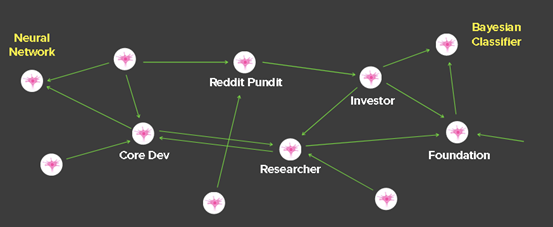
The ICO
DFINITY has already successfully fundraised $61 million from Polychain Capital, a crypto hedge fund and Andresson Horowitz, a private American venture capital firm. This may have taken the place of a public ICO.
“We are wary of running an ICO and having our reputations tarnished by some of the ‘bad’ ICOs that were run, or becoming embroiled with problems with regulators,” Williams said in an interview with VentureBeat. However, there is genuine interest from the community in investing in DFINITY, so Williams and his team is considering other options for a token distribution.
